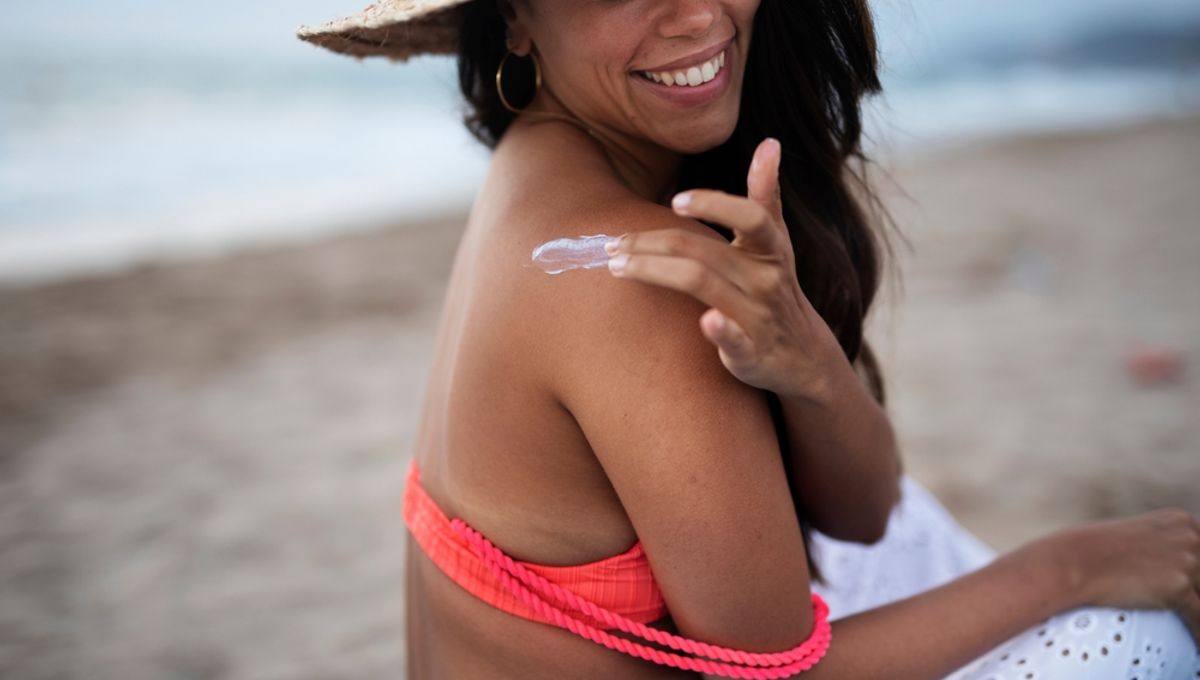
As temperature records continue to be broken and scores of us across the globe are experiencing a heatwave, people in many parts of the world are likely reaching for the sunscreen. We know it helps protect our skin, but how exactly does it do this? And does it stop us from tanning while it’s at it?
We’re well versed by now in the dangers of the Sun – sunburn, skin cancer, and premature aging being among them – as well as the ability of sunscreen to combat these. However, we are perhaps not so familiar with the science that underpins this. So let’s shed some light and bring sunscreen out of the shade.
How does sunscreen work?
Sunscreen works by protecting the skin from ultraviolet (UV) radiation. In doing so, it prolongs the time we can spend being exposed to the Sun before getting burnt.
Sunburn, or solar erythema, occurs when UV damages cells in the epidermis, the top layer of skin. The immune system responds by increasing blood flow to the area, which is what makes the skin appear red and hot to touch. White blood cells then get to work removing the damaged cells, causing itchiness and peeling.
To prevent this from happening, sunscreen stops UV rays from inflicting the initial damage, either by absorbing them (chemical sunscreen) or by reflecting them (physical sunscreen).
Chemical-based sunscreens include avobenzone, octinoxate, and oxybenzone, which convert UV into heat before releasing it from the body. Meanwhile, the main active ingredients in physical-based sunscreens are titanium dioxide and zinc oxide, which act as a barrier, scattering UV rays away from the skin.
There are two types of UV radiation: UVA and UVB. According to the Centers for Disease Control and Prevention (CDC), almost all the UV radiation that reaches Earth is UVA, which penetrates deeper into the skin. Because of this, it is responsible for aging the skin, while UVB is associated with most sunburns. Broad-spectrum sunscreens protect us from both types of radiation.
Does sunscreen prevent tanning?
We tan because UV increases the production of melanin – a pigment that also colors our eyes and hair – as our skin attempts to prevent further damage.
“There is no such thing as a safe tan,” the US Food and Drug Administration states. It’s a response to damage to the epidermis and is associated with a heightened risk of skin cancer.
As tanning is caused by UV rays, which we now know sunscreens work to absorb/block, wearing sunscreen prevents tanning to some degree.
“Tanning is caused mostly by UVA rays and if we are using a broad-spectrum, UVA/UVB product most of us will not tan,” dermatologist Loretta Ciraldo told Byrdie.
That being said, no sunscreen blocks 100 percent of UV rays, meaning we may still tan a bit whilst wearing it.
“The exception is someone who is heavily pigmented to start, where even minimal amounts of UVA that the SPF may permit through will tan [their] skin,” Ciraldo added.
Ultimately, though, this is a good thing. We may not catch a tan while slathered in factor 50, but we’re better protected from skin damage and some of the other unsavory effects of the Sun.
For maximum Sun safety, taking multiple Sun protection precautions is advised. You can find out more on the CDC website.
All “explainer” articles are confirmed by fact checkers to be correct at time of publishing. Text, images, and links may be edited, removed, or added to at a later date to keep information current.
The content of this article is not intended to be a substitute for professional medical advice, diagnosis, or treatment. Always seek the advice of qualified health providers with questions you may have regarding medical conditions.
Source Link: Does Sunscreen Prevent Tanning?